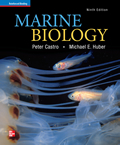
Marine Biology (Castro), 9th EditionChapter 17: Resources from the SeaDo It Yourself SummaryRead each sentence and identify the word/phrase that you believe correctly completes the statement. Then, click on the arrow to see if your answer is correct.1. Most of the world's fisheries are concentrated along the coast, especially in areas enriched by . Bottom catches are known as , open-water ones as . 2. fisheries are those in which the catch is not consumed directly by humans but processed into and other products. 3. Catches above the optimal, or yield lead to . Catches below this level are in tune with the natural growth of the catch. 4. To prevent overfishing and protect other offshore resources, many nations ascribe to an international agreement allowing them to establish an (or ), which extends 200 nautical miles offshore. 5. The development of new fisheries, like that of the Antarctic , and an increase in the use of underutilized species are two ways of increasing the harvest of food from the sea. 6. , the farming of the sea, is another way of increasing our supply of food. It is known as when applied to both freshwater and marine organisms. 7. Energy sources from the sea include , and potentially . 8. , lumps of minerals found in deep-ocean basins, are a promising resource. 9. Through , seawater can provide fresh water, as well as table salt and other minerals. 10. Various schemes have been designed to harness energy from tides, waves, and currents. (or ) is one such scheme that takes advantage of the temperature differences between the surface and bottom. |  |















